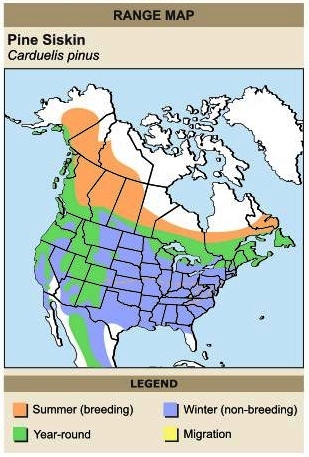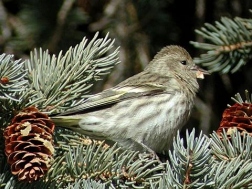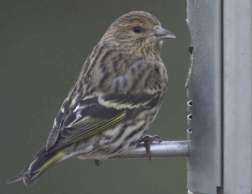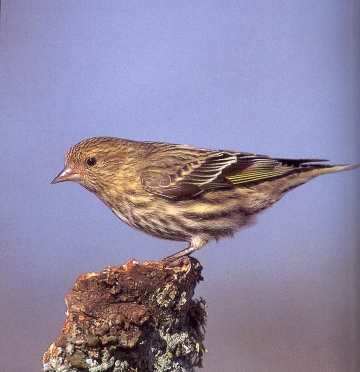
Small finch
with brown-streaked body. Wings have small patches of yellow and two
white wing-bars. Tail is dark, notched, and has small yellow patches.
Bill is slender and pointed.
Forages on ground and in trees
for seeds and insects. Flight is swift and high, travels in compact
flocks.

|
PINE
SISKIN
Carduelis pinus
PASSERIFORMES
Range and Habitat
Breeds from southern Alaska, Mackenzie, Quebec, and
Newfoundland south to California, Arizona, New Mexico, Texas, Great
Lakes region, and northern New England; wanders southward throughout
the U.S. during winter.
Preferred habitats include coniferous and deciduous forests, woodlands,
parks, shade trees near human habitation, alder thickets, and brushy
pastures.
SOUND: "ZZZzzzzzzzzzrree"
The Pine Siskin is the most common of the irruptive "winter finches."
The name Siskin is derived from its sound or chirp. Thus, this bird’s
common name is really “pine chirper.”
When eating from conifers, it usually hangs upside
down from the tips of the trees.
A group of finches has many collective nouns, including a "charm",
"company", and "trembling" of finches.
 ___ ___
The Pine Siskin has a very large range estimated at roughly 7,800,000
kilometers. This bird can be found the United States, Mexico, Canada
and Saint Pierre and Miquelon. Its preferred habitats include forests
and shrublands as well as rural gardens and plantations.

|





 ___
___